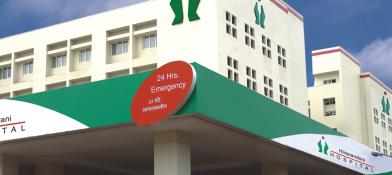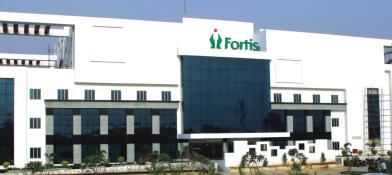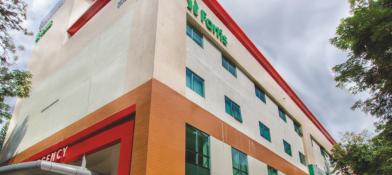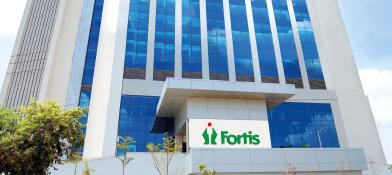Myomectomy
Overview:
Myomectomy is the surgical procedure of removing growths called uterine fibroids. Uterine fibroids are also called leiomyomas. These are the noncancerous growths in the uterus that can affect the quality of life. These affect women from teen years to menopausal years. Myomectomy removes the fibroids that are causing symptoms and preserves the uterus.
Indications:
Myomectomy treats fibroids. Fibroids are benign, noncancerous growths that occur in the uterus. They cause symptoms like heavy menstrual bleeding, pain, increased urination, back pain, fertility issues, and complications during pregnancy. Fibroids can grow at different locations in the uterus and can be of different sizes.
- This procedure is done when the uterine structure can be retained even after removing the fibroids.
- This is also a preferred method for fibroids that interfere with fertility.
- This is a preferred method for women who want to get pregnant.
Advantages:
Myomectomy retains the uterus, unlike hysterectomy, where the entire uterus is removed. Individuals undergoing myomectomy can still get pregnant, unlike hysterectomy. It helps in spontaneous or assisted fertility. It reduces the rate of miscarriage. It improves the quality of life and reduces symptom severity.
Types of myomectomy:
Myomectomy is done by various methods. It includes:
- Hysteroscopic myomectomy: This is done for small fibroids or fibroids that bulge into the uterine cavity. Instruments are sent into the uterus through the vagina to remove the fibroid.
- Laparoscopic or Robotic myomectomy: These are minimally invasive procedures that remove the fibroid tissue using laparoscopy or robotic surgery.
- Abdominal or Open myomectomy: This is an open surgical technique that involves making an abdominal incision and the fibroids are removed.
Before the procedure:
Before myomectomy, an individual has to give complete details of the medical history, medications, or any history of previous surgeries. Few blood tests, urine tests, and imaging studies may be needed to understand the present physical condition of the individual. Diet will be restricted, and a list of medications will be stopped and used before the procedure is given. The surgery will be done on an empty stomach. Hence, it is necessary to refrain from eating anything 8-12 hours before surgery.
During the procedure:
Myomectomy is done under anesthesia. General anesthesia is preferred for women who are undergoing abdominal or hysteroscopic myomectomy. Monitored anesthetic care is preferred when procedures like hysteroscopic myomectomy are planned as it is less invasive and requires less anesthesia.
For procedures like abdominal myomectomy, a few days of hospital stay may be needed. The other myomectomies can be done within one or two days of stay in the hospital. Based on the number, location, and size of the fibroids, any of the three surgical procedures may be opted for. Both open and laparoscopic methods are safe, but advanced methods like robotic-assisted myomectomy have technical advantages over traditional methods. These are surgically precise, minimally invasive, and have faster recovery rates compared to the traditional methods.
After securing an intravenous line for giving medications and fluids, myomectomy procedure is done. In abdominal myomectomy vertical or horizontal incisions can be given depending on the size of the uterus and the fibroid is removed. In laparoscopic or robotic myomectomy small cuts are made in the abdomen and a small camera is sent to visualize the fibroid. Using small instruments the fibroid is removed.
In robotic myomectomy, similar cuts are made in the abdomen but the movements of the instruments are done from the console using robotic help. The fibroid may be cut into small pieces called morcellation which are removed through the incisions or it may be removed as a single large piece.
In hysteroscopic myomectomy, the fibroids are removed by inserting special instruments called loop resectoscopes or hysteroscopic morcetellors. A sterile salt solution is sent into the uterus to expand the uterine cavity. Using these instruments, the fibroid is shaved constantly until the entire tissue is removed. The resectoscope cuts the fibroid using current, and the morcetellor manually removes the fibroid.
After the procedure:
Individuals are brought to the recovery room and watched carefully till the vitals stabilize. Later, the individual may be prescribed certain antibiotics and painkillers to reduce pain and infection. One can notice vaginal spotting a few days to 6 weeks after myomectomy, based on the type of procedure. Recovery from myomectomy depends on the choice of surgical procedure. Instructions will be given on the type of diet and activities that can be carried out.
The success of Myomectomy:
The success of a myomectomy depends on the improvement of symptoms like reduced pain and bleeding, improved quality of life, and improved fertility. A waiting period of 3 to 6 months is needed for healing before planning for pregnancy.
Risks and complications:
Some risks and complications associated with myomectomy include excessive blood loss due to anemic conditions in women with fibroids. This can be avoided by blocking uterine arteries during surgery, blood transfusion, and supplementing with necessary medications. Scarring of the uterus after removing fibroids is common and can lead to adhesions between the tissues.
Increased risk during pregnancy is one of the complications. Hence, healthcare providers may suggest cesarean delivery when a woman conceives after myomectomy to avoid uterine rupture. The recurrence of fibroids is another complication. In case of severe bleeding, sometimes the uterus has to be removed in total. Occasionally, improper assessment of the growth before surgery can spread cancerous cells due to morcellation if the removed tissue is a cancer instead of a fibroid.
Conclusion:
Myomectomy is an important surgical option for uterine fibroids. Depending on the fibroid's size and their location in the uterus, different surgical techniques like the traditional or laparoscopic methods can be used. It gives immense relief from symptoms and preserves fertility in women, improving their health and quality of life.
Popular Searches :
Hospitals: Cancer Hospital in Delhi | Best Heart Hospital in Delhi | Hospital in Amritsar | Hospital in Ludhiana | Hospitals in Mohali | Hospital in Faridabad | Hospitals in Gurgaon | Best Hospital in Jaipur | Hospitals in Greater Noida | Hospitals in Noida | Best Kidney Hospital in Kolkata | Best Hospital in Kolkata | Hospitals in Rajajinagar Bangalore | Hospitals in Richmond Road Bangalore | Hospitals in Nagarbhavi Bangalore | Hospital in Kalyan West | Hospitals in Mulund | Best Hospital in India | | Cardiology Hospital in India | Best Cancer Hospital in India | Best Cardiology Hospital in India | Best Oncology Hospital In India | Best Cancer Hospital in Delhi | Best Liver Transplant Hospital in India
Doctors: Dr. Rana Patir | Dr. Rajesh Benny | Dr. Rahul Bhargava | Dr. Jayant Arora | Dr. Anoop Misra | Dr. Manu Tiwari | Dr. Praveer Agarwal | Dr. Arup Ratan Dutta | Dr. Meenakshi Ahuja | Dr. Anoop Jhurani | Dr. Shivaji Basu | Dr. Subhash Jangid | Dr. Atul Mathur | Dr. Gurinder Bedi | Dr. Monika Wadhawan | Dr. Debasis Datta | Dr. Shrinivas Narayan | Dr. Praveen Gupta | Dr. Nitin Jha | Dr. Raghu Nagaraj | Dr. Ashok Seth | Dr. Sandeep Vaishya | Dr. Atul Mishra | Dr. Z S Meharwal | Dr. Ajay Bhalla | Dr. Atul Kumar Mittal | Dr. Arvind Kumar Khurana | Dr. Narayan Hulse | Dr. Samir Parikh | Dr. Amit Javed | Dr. Narayan Banerjee | Dr. Bimlesh Dhar Pandey | Dr. Arghya Chattopadhyay | Dr. G.R. Vijay Kumar | Dr Ashok Gupta | Dr. Gourdas Choudhuri | Dr. Sushrut Singh | Dr. N.C. Krishnamani | Dr. Atampreet Singh | Dr. Vivek Jawali | Dr. Sanjeev Gulati | Dr. Amite Pankaj Aggarwal | Dr. Ajay Kaul | Dr. Sunita Varma | Dr. Manoj Kumar Goel | Dr. R Muralidharan | Dr. Sushmita Roychowdhury | Dr. T.S. MAHANT | Dr. UDIPTA RAY | Dr. Aparna Jaswal | Dr. Ravul Jindal | Dr. Savyasachi Saxena | Dr. Ajay Kumar Kriplani | Dr. Nitesh Rohatgi | Dr. Anupam Jindal
Specialties: Heart Lung Transplant | Orthopedic | Cardiology Interventional | Obstetrics & Gynaecology | Onco Radiation | Neurosurgery | Interventional Cardiology | Gastroenterologist in Jaipur | Neuro Physician | Gynecologist in Kolkata | Best Neurologist in India | Liver Transfer































